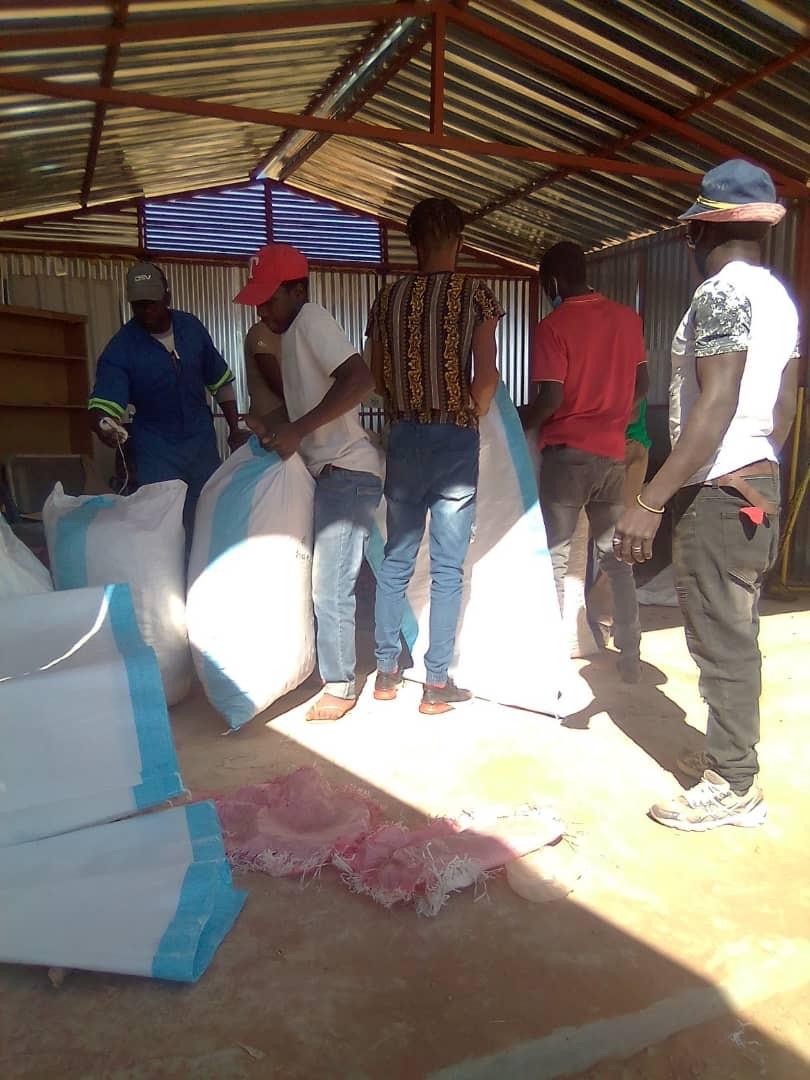Devil’s claw brings financial relief for Omaheke communities
ELLANIE SMIT
WINDHOEK
Community members from the Eiseb and Omuramba ua Mbinda conservancies in the Omaheke Region collectively generated close to N$300 000 from the sales of devil’s claw in July.
The Namibia Nature Foundation (NNF), with N$1.5 million funding from the Social Security Commission (SSC) under the Employment Creation Scheme, has sought to support and equip about 100 devil’s claw harvesters from the two conservancies over two years to become self-employed and successful from harvesting and selling the plant.
At the first buying event at Okatumba Gate in August 2020, N$160 000 was generated. Since then, two storage units were constructed at Eiseb 10 and at Okatumba Gate to serve as established buying points, which are managed by the conservancies.
A second formal buying event was organised by the two conservancies with the support of NNF and was held on 9 and 10 July.
Around 5 000 kilograms of devil’s claw were sold to EcoSo dynamics at N$58 per kilogram, of which N$6 is subsidised for the administration of the conservancies’ buying point.
According to the NNF, the administration of the conservancies plays a vital role in the selling price of devil’s claw by ensuring the quality of the plant sold is of a high standard and best harvesting practices are adhered to.
Devil’s claw is an indigenous plant to southern Africa and is widely used as a medicine for treating arthritis, reducing pain and fever, and stimulating digestion. More recently, it has become an important product for export to the European market, with the biggest exports to France and Germany.
In Namibia, devil’s claw is listed as a protected species under the 1977 Nature Conservation Ordinance of the environment ministry, and may not be harvested or exported without the correct permits.
Ensuring resource longevity
A Sustainably Harvested Devil’s Claw (SHDC) Model is being implemented in Omaheke to ensure long-term use of this plant resource.
The NNF said the sustainable harvesting of devil’s claw involves only partially harvesting the plant’s underground tubers, therefore not killing the plant, but allowing it time to recover and to be harvested in the future.
This encompasses the Community-Based Natural Resource Management (CBNRM) model, which ensures that the natural resources community members are dependent on for their livelihoods are managed sustainably.
Moreover, the sustainable use of the devil’s claw contributes to the extensive generation of incentives and conditions for an identified group of resource users in such conservancies. Under the same model, formal buying events are also organised by the conservancies to cut out middlemen and ensure that harvesters receive a fair price for the devil’s claw.
The two conservancies’ managers, Erwin Tjituka and Jacquiline Kandapaera, added that should harvesters continue to harvest sustainably, devil’s claw will continue to generate income for the community members, their families and generations to come.
WINDHOEK
Community members from the Eiseb and Omuramba ua Mbinda conservancies in the Omaheke Region collectively generated close to N$300 000 from the sales of devil’s claw in July.
The Namibia Nature Foundation (NNF), with N$1.5 million funding from the Social Security Commission (SSC) under the Employment Creation Scheme, has sought to support and equip about 100 devil’s claw harvesters from the two conservancies over two years to become self-employed and successful from harvesting and selling the plant.
At the first buying event at Okatumba Gate in August 2020, N$160 000 was generated. Since then, two storage units were constructed at Eiseb 10 and at Okatumba Gate to serve as established buying points, which are managed by the conservancies.
A second formal buying event was organised by the two conservancies with the support of NNF and was held on 9 and 10 July.
Around 5 000 kilograms of devil’s claw were sold to EcoSo dynamics at N$58 per kilogram, of which N$6 is subsidised for the administration of the conservancies’ buying point.
According to the NNF, the administration of the conservancies plays a vital role in the selling price of devil’s claw by ensuring the quality of the plant sold is of a high standard and best harvesting practices are adhered to.
Devil’s claw is an indigenous plant to southern Africa and is widely used as a medicine for treating arthritis, reducing pain and fever, and stimulating digestion. More recently, it has become an important product for export to the European market, with the biggest exports to France and Germany.
In Namibia, devil’s claw is listed as a protected species under the 1977 Nature Conservation Ordinance of the environment ministry, and may not be harvested or exported without the correct permits.
Ensuring resource longevity
A Sustainably Harvested Devil’s Claw (SHDC) Model is being implemented in Omaheke to ensure long-term use of this plant resource.
The NNF said the sustainable harvesting of devil’s claw involves only partially harvesting the plant’s underground tubers, therefore not killing the plant, but allowing it time to recover and to be harvested in the future.
This encompasses the Community-Based Natural Resource Management (CBNRM) model, which ensures that the natural resources community members are dependent on for their livelihoods are managed sustainably.
Moreover, the sustainable use of the devil’s claw contributes to the extensive generation of incentives and conditions for an identified group of resource users in such conservancies. Under the same model, formal buying events are also organised by the conservancies to cut out middlemen and ensure that harvesters receive a fair price for the devil’s claw.
The two conservancies’ managers, Erwin Tjituka and Jacquiline Kandapaera, added that should harvesters continue to harvest sustainably, devil’s claw will continue to generate income for the community members, their families and generations to come.





Comments
Namibian Sun
No comments have been left on this article